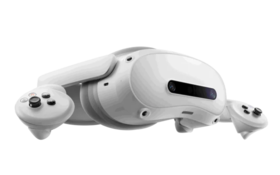

يعزز Medicalholodeck التعليم الجراحي من خلال إتاحة محاكاة واقعية باستخدام توائم رقمية مُنشأة من بيانات مرضى فعلية. يمكن للجراحين والمقيمين تحميل صور CT وMRI الخاصة بالمرضى، واستكشاف التشريح ثلاثي الأبعاد، وإنشاء نماذج دقيقة تُحاكي المشهد الجراحي الذي سيواجهونه. يوفر ذلك وسيلة قوية لدراسة السمات التشريحية الفريدة، وتقييم التعقيدات، والاستعداد للحالات الصعبة.
باستخدام نماذج تفصيلية قائمة على المريض، يمكن للفرق تخطيط العمليات الجراحية المعقدة وإجراء بروفات افتراضية لها خطوة بخطوة. يمكنهم تدوير البنى التشريحية وتقطيعها وعزلها، ورسم مسارات الاستئصال، وتوقّع المضاعفات المحتملة — وكل ذلك قبل دخول غرفة العمليات. هذا التدريب العملي يحسّن الفهم المكاني ويُحكم التخطيط الإجرائي ويدعم تدخلات أكثر أماناً وثقة.
Medicalholodeck AI يُبسّط عملية التحضير من خلال تقسيم الأعضاء والأوعية والمناطق المرضية تلقائياً من صور DICOM. خلال لحظات، يمكن للمستخدمين إنشاء نماذج ثلاثية الأبعاد واضحة ومحددة لكل بنية للتركيز على الأورام أو الشبكات الوعائية أو المناطق الحرجة الأخرى. هذا يسرّع التحليل ويعزز الدقة ويضمن عمل الفرق على مراجع تشريحية عالية الدقة.
نادراً ما يتم التخطيط الجراحي بشكل فردي. يتيح Medicalholodeck للفرق كاملة الاجتماع ضمن مساحات افتراضية مشتركة لفحص تشريح المريض ومناقشة الاستراتيجيات وتنسيق الأدوار. ومن خلال التعاون حول النماذج الخاصة بالمريض نفسه، يتوافق الجراحون والمساعدون والمتخصصون على الأساليب ويصقلون الخطط معاً—وهو ما يعكس العملَ الجماعي متعدد التخصصات الضروري في غرف العمليات الحديثة.
مع RecordXR, يمكن للفرق تسجيل جلساتها المكانية — توثيق الجولات، إبراز التحديات التشريحية، وسرد خطوات الإجراء. تصبح هذه التسجيلات موارد قيّمة للمراجعة لاحقاً، ولتعليم الأقران أو تدريب المقيمين الجدد على حالات مشابهة. إنها توسّع نطاق التعلم إلى ما بعد جلسة واحدة، وتبني مكتبة من الرؤى الخاصة بالإجراءات يمكن للفرق الرجوع إليها في أي وقت.

